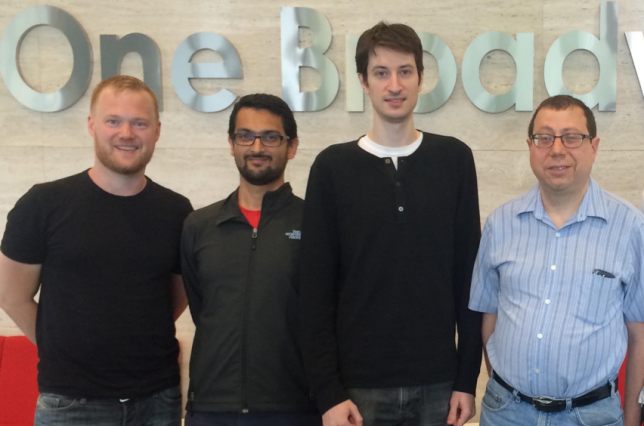| Julia Language Creators Awarded Numerical Software Prize |
| Written by Sue Gee | |||
| Tuesday, 01 January 2019 | |||
|
Three of the co-creators of the Julia programming language are the recipients of the 2019 James H. Wilkinson Prize for Numerical Software, which is awarded every four years to recognize innovative software in scientific computing by researchers in the early stages of their careers. Julia is a dynamic language for technical computing that is especially good at running MATLAB and R-style programs and has achieved popularity among the scientific computing community. The 2019 Wilkinson Prize prize, which comprises $3000 plus a commemorative plaque for each winner, has been awarded to recognize Julia as: “an innovative environment for the creation of high-performance tools that enable the analysis and solution of computational science problems.” Pictured left to right, Stefan Karpinski, Viral Shah, and Jeff Bezanson who will receive the 2019 James H. Wilkinson Prize for Numerical Software. Julia's fourth co-creator, Professor Alan Edelman, is at the far right. According to the Numerical Algorithms Group (NAG), which together with Argonne National Laboratory and the National Physical Laboratory (NPL) administers it, the Wilkinson Prize was established to honour the outstanding contributions of Dr James Hardy Wilkinson to the field of numerical software. As recorded in our history article Alan Turing's Ace, Jim Wilkinson, became Alan Turing's Assistant at the NPL in 1946 to write subroutines to do floating -point arithmetic. When Turing left the NPL in 1948 it was Wilkie, as he was then known, who took control of the project to create the Pilot ACE computer. Candidates for the prize must have worked in mathematics or science for at most 12 years after receiving their PhD and judging criteria are:
The 2019 prize, which comprises $3000 plus a commemorative plaque for each winner, will be shared by Jeff Bezanson who was awarded his PhD in 2015 and former Julia Lab researchers, Stefan Karpinski and Viral Shah. According to a statement from the selection committee: “Julia allows researchers to write high-level code in an intuitive syntax and produce code with the speed of production programming languages and has been widely adopted by the scientific computing community for application areas that include astronomy, economics, deep learning, energy optimization, and medicine. In particular, the Federal Aviation Administration has chosen Julia as the language for the next-generation airborne collision avoidance system.” As we reported in 2015 when Julia was given $600K by the Moore Foundation to get the dynamic language to a production version, Julia first came to attention in 2012 when it was publicly released, but development began on it in 2009 under the direction of MIT professor of Computer Science Alan Edelman. Julia passed the milestone of release 1.0 in August 2018, see our report. Since 2012 Julia has over 3 million downloads and is used in over 1,500 universities for scientific and numerical computing. Commenting on its success in the MIT announcement of the Wilkinson prize Professor Edelman said: “I am proud of the intellectual contributions of the Julia Lab, which applies the latest in computer science to science and engineering problems, while engaging interdisciplinary collaborations all over campus and beyond. Julia is increasingly the language of instruction for scientific computing at MIT.”
More InformationJulia language co-creators win James H. Wilkinson Prize for Numerical Software James H.Wilkinson Prize for Numerical Software Related Articles
To be informed about new articles on I Programmer, sign up for our weekly newsletter, subscribe to the RSS feed and follow us on Twitter, Facebook or Linkedin.
Comments
or email your comment to: comments@i-programmer.info |
|||
| Last Updated ( Monday, 07 August 2023 ) |



